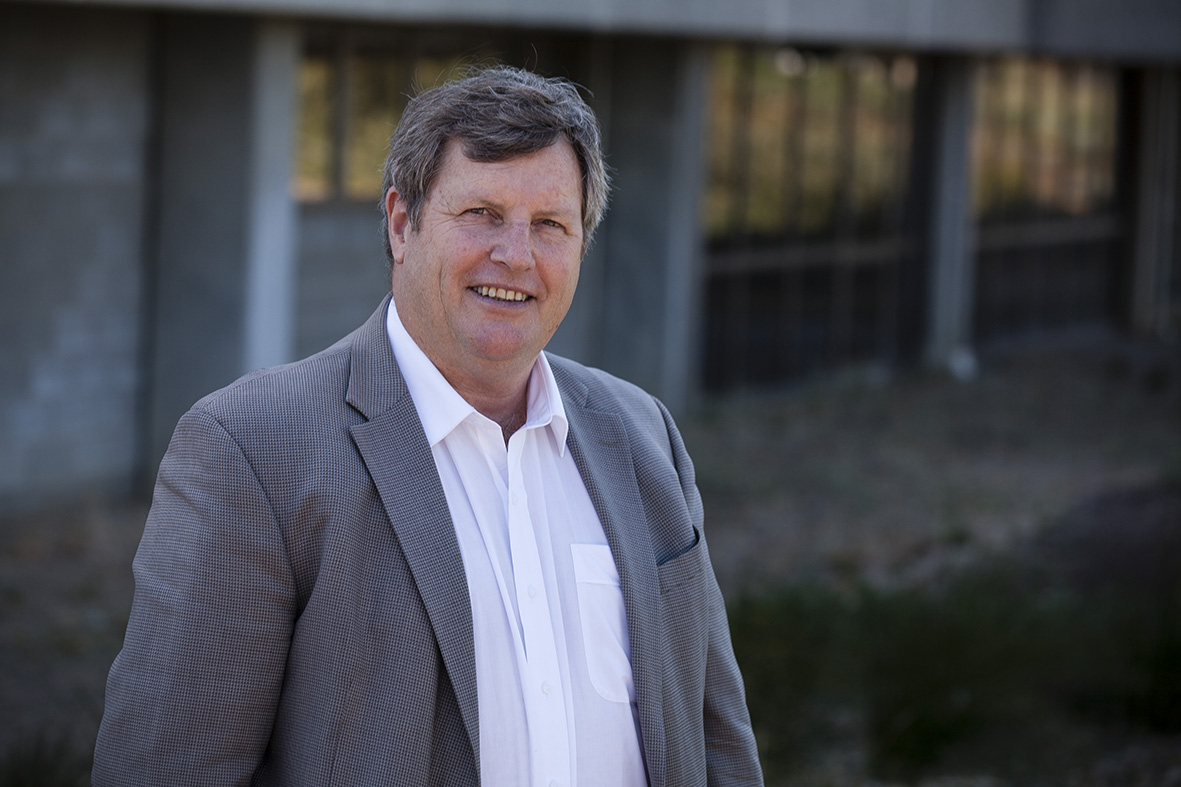Part of the Biosecurity Series
By Gary Fitt, Director of CSIRO’s Biosecurity Flagship
When our biosecurity scientists introduce themselves to people outside the organisation and say their job is to help to protect Australia from nasty pests and diseases, they’re normally met with a puzzled expression. Soon the puzzlement turns to awe, and is followed by questions like ‘You mean you get to wear those big suits like Dustin Hoffman in the Hollywood thriller Outbreak?’
While some of our scientists work in high containment laboratories, kitted out in special protective ‘space suits’ to research deadly diseases, our work in biosecurity is much broader.

Our scientists working in the high containment area at the Australian Animal Health Laboratory in Geelong
Biosecurity threats extend beyond infectious diseases to include weeds, invasive animals and insects. These all have the potential to devastate our crops, livestock and farming profits, our environment and even human health.
Historically, Australia’s strong quarantine measures and geographic isolation have protected us from some of the most serious impacts posed by exotic pests and diseases circulating around the world, but the movement of plants, animals and people across the globe and a changing climate are placing pressure on Australia’s future ability to protect itself from exotic pest and disease threats.
To address these challenges, we’ve reorganised our biosecurity related research activities into our new Biosecurity Flagship (you can find the full details in the brochure) to bring scale and connectivity to help Australia prepare for and prevent the spread and impacts of pests and diseases.
What’s a Flagship you ask? In a nut-shell it’s a large-scale research program which uses world-class science to deliver powerful solutions that tackle Australia’s major challenges and opportunities. This new flagship focuses our research across animal, plant and environmental science to more rapidly develop solutions to address Australia’s major biosecurity challenges.

Dr Gary Fitt, Director of CSIRO’s new Biosecurity Flagship
Australians are aware of the damage that diseases, weeds, invasive animals and insects can inflict on crops, livestock, properties, farm profits and on human health. Biosecurity is all about preventing or keeping the impact of these threats and outbreaks to a minimum. Through research, we are working to reduce the risk of pests and diseases entering Australia, as well as improving the effectiveness of our mitigation and eradication responses.
We’ve traditionally tackled wildlife, animal and human diseases completely separately, but what we’re doing now through the Flagship’s integrated activities is taking a ‘One Health’ approach to understanding how these viruses spread between wild animals, livestock and people, and how to reduce the risks or be prepared for rapid response.
For instance, to deal with zoonotic diseases (those that can pass from animals to people), we’re adopting a more coordinated approach to understanding the multidimensional links between wild animals, livestock production, the environment and global public health.
CSIRO’s One Health approach has already been successful with the development of a horse vaccine against the deadly Hendra virus. Flying foxes carry the disease, although they are not affected by it, and the virus is lethal when transmitted to horses and from infected horses to humans. By working together, we realised that there wasn’t much we could do to reduce bat populations, and vaccinating people would be too expensive and too lengthy a process. We identified the horse vaccine as the most direct and effective strategy for the protection of both people and horses, breaking the chain of virus transmission from flying foxes to horses, and then to people, and protecting the horses themselves from a devastating infection that would otherwise most likely lead to their death.
The improved coordination of biosecurity research through the Flagship will enable us to better safeguard public health, the environment and the economy into the future. It will also greatly assist other countries as they too strive to deal with the pests and diseases that continue to spread globally and threaten general health.
Biosecurity is a system of shared responsibility across layers of government, which needs a statistically sound understanding of risk, pathways of entry, optimised surveillance and rapid diagnosis. Working with national and international research bodies, and the operational agencies responsible for delivering biosecurity, we will work across all these issues to jointly tackle biosecurity threats head on.
Next Thursday marks the official launch of the Biosecurity Flagship. To celebrate the launch, over the coming week we will feature a series of blog posts highlighting some of the Flagship’s activities.
We’ll also be featuring a special post from our guest blogger, author, Nobel Laureate and 1997 Australian of the Year, Peter Doherty.
Join the Conversation: #bflaunch
About the Author
 Dr Gary Fitt is Director CSIRO’s Biosecurity Flagship, and is focused on protecting Australia from the biosecurity threats and risks posed by serious exotic and endemic pests and diseases.
Dr Gary Fitt is Director CSIRO’s Biosecurity Flagship, and is focused on protecting Australia from the biosecurity threats and risks posed by serious exotic and endemic pests and diseases.


18th July 2013 at 7:37 am
But Andrew you say: “Biosecurity is a system of shared responsibility across layers of government, which needs a statistically sound understanding of risk, pathways of entry, optimised surveillance and rapid diagnosis. Working with national and international research bodies, and the operational agencies responsible for delivering biosecurity, we will work across all these issues to jointly tackle biosecurity threats head on.”
If you have that responsibility then you should know the answer?
Or are the Australian taxpayers contributing to research ‘…..after the horse has bolted’?’ I assume the money is coming from the Fed Gov?
17th July 2013 at 10:11 am
Just wondering how much man power we have to properly protect our borders?
17th July 2013 at 3:50 pm
Hi Susan
The Federal Government’s Department of Agriculture, Fisheries and Forestry has the primary responsibility for managing Australia’s biosecurity system. You can find the full details on their website.